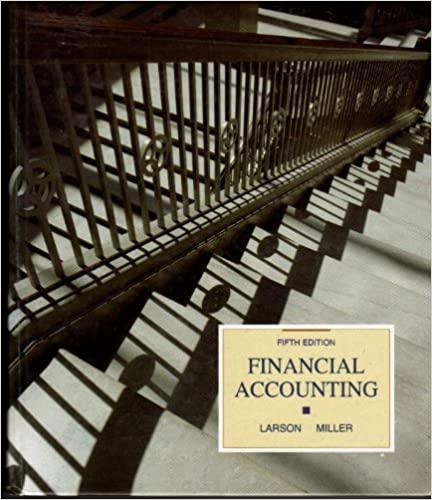please fill in andwers in the yellow cells
Toefield Inc. has developed a powerful efficient snow remover that is significantly less polluting than existing snow removers currently on the market. The company spent $2,000,000 developing this product and the marketing department spent ano ther $300,000 to assess the market demand. It would cost $20 million at Year 0 to buy the equipment necessary to manufacture the efficient snow blower. The project would require net working capital at the beginning of each year equal to 20% of sales (NOWCO-20 % (Sales 1), NOWCI 20%(Sales2), etc.). The efficient snow blowers would sell for $3,000 per unit, and Toefield believes that variable costs would amount to $790 per unit. The company expects that the sales price and variable costs would increase at the inflation rate of 2% after year 1. The company's non-variable cests would be $800,000 in Year 1 and are expected to increase with inflation. The efficient snow blower project would have a life of 4 years. If the project is undertaken, it must be continued for the entire 4 years. Also, the project's returns are expected to be highly correlated with returns on the firm's other assets. The firm believes it could sell 5,000 units per year. The equipment would be depreciated using a CCA rate of 30%. The estimated market value of the equipment at the end of the project's 4 year life is $500,000. Toefield has other assets in this asset class. Toefleld Inc.'s federal-plusprovincial tax rate is 30%. Its cost of capital is 9% for average risk projects. Low-risk projects are evaluated with a WACC of 6%, and high-risk projects at 12% Develop a spreadsheet model and use it to find the project's NPV, IRR, and payback Key Output: NPV Part 1. Input Data (in thousands of dellars except for unit amount) IRR MIRR Equipment cost Net Operating WC/sales Yearly sales (in units) Sales price per unit Variable cost per unit Non-variable costs 20,000 20% 5,000 Market value of equipment at Year 4 Tax rate $500 30% $3.00 WACC 9% $0.79 Inflation CCA rate 2.0% $800 30.0% Part 2. CCA Schedule Years Beg. UCC 20,000 17,000 11,900 CCA End UCC year 1 year 2 year 3 gear 4 3,000 5,100 3,570 $17,000 $11,900 $8,330 55,831 8,330 2,499 Part 3. Projected Net Cash Flows (Time line of anual e ine of annual cash flows) art 3. Projected Net Cash Flows 3 1 0 Years Investment Outlays at Time Zero quipment 20,000 Operating Cash Flows over the Project's Life Units sold Sales price Variable costs 5,000 $3.18 5,000 5,000 $3.00 5,000 $3.12 $3.06 $0.81 Sales revenue Variable costs Non-variable operating costs Depreciation (equipment) Oper. income before taxes (EBIT) Taxes on operating income (40% ) Net Operating Profit After Taxes (NOPAT) Add back depreciation Operating cash flow 800 800 800 800 Net Working Capital Required level of net operating working capital Required investment in NOWC Terminal Year Cash Flows Net salvage value Net Cash Flow (Time line of cash flows) Part 4. Key Outpat: Appraisal of the Proposed Project Net Present Value (at 9%) IRR MIRR Payback (See ealculation below) Data for Payback Years Net cash Bow Comalatve C Part of year required for payback 0.00 0.00 0.00 0.00 b. Conduct a sensitivity analysis to determine the sensitivity of NPV to changes in the sales price, variable costs per unit, and number of units seld. Set these variables' values at 10% and 25% above and below their base case values. Include a graph in your analysis. Evaluating Risk: Sensitivity Analysis L. Sensitivity of NPV to Changes in Inputs. Here we use an Excel "Data Table" to find NPV for different unit sales, variable costs, WACC and sales prices, holding other thing constant % Deviation WACC % Deviation 1st YEAR UNIT SALES NPV NPV $0 frem Units from WACC Base Case Sold Base Case S0 -25% S0 $0 S0 25% -10% 0% -10 %| $0 S0 0% $0 10% $0 10 % 25% $0 25% S0 VARIABLE COSTS SALES PRICE % Deviation % Deviation from Variable NPV NPV from Sales S0 Base Case Costs Base Case Price S0 -25% -10 % -25% S0 S0 S0 -10 % 0% 0% 10 % 25% S0 10 % 25% S0 % DeviationNON-VARIABLE COSTS Fixed from Base Case 25% -10 % 0% Note about data tables. The data in the column input should NOT be input asing a cell reference to the column input cell. For example the base case number of units sold in cell B100 should be the number 1000; you should NOT have the formula -D29 in that cell. This is because you'll use D29 as the column input cell in the data table and if Excel tries to iteratively replace cell D29 with the formula -D29 rather than a series of numbers, Excel will caleulate the wrong answer. Unfortunately, Excel won't tell you that there is a problem, so you'll just get the wrong values for the data table! NPV S0 S0 Costs 10% 25% 50 Sensitivity Analysis $11,000 $9,000 $7,000 $5,000 Sales price VC Sensitivity Analysis $11,000 $9,000 $7,000 Sales price $5,000 vc $3,000 $1,000 Units Non-var. cost (S1,000) WACC ($3,000) (S5,000) ($7,000) -20% -10% % 10% 20% Deviation NPV at Different Deviations from Base Variable Cost frem Base Case -25% -10% 0% Sales Price Nen-variable Note: Copy the results from the sensitivity analysis into this table. Units Sold Cost WACC 10% 25% Range Waald you recommend that the project be accepted? Explain ineed belp vaith this assionment L do't koow what to input.in the cells to aet the pumbers NPV IL 1










